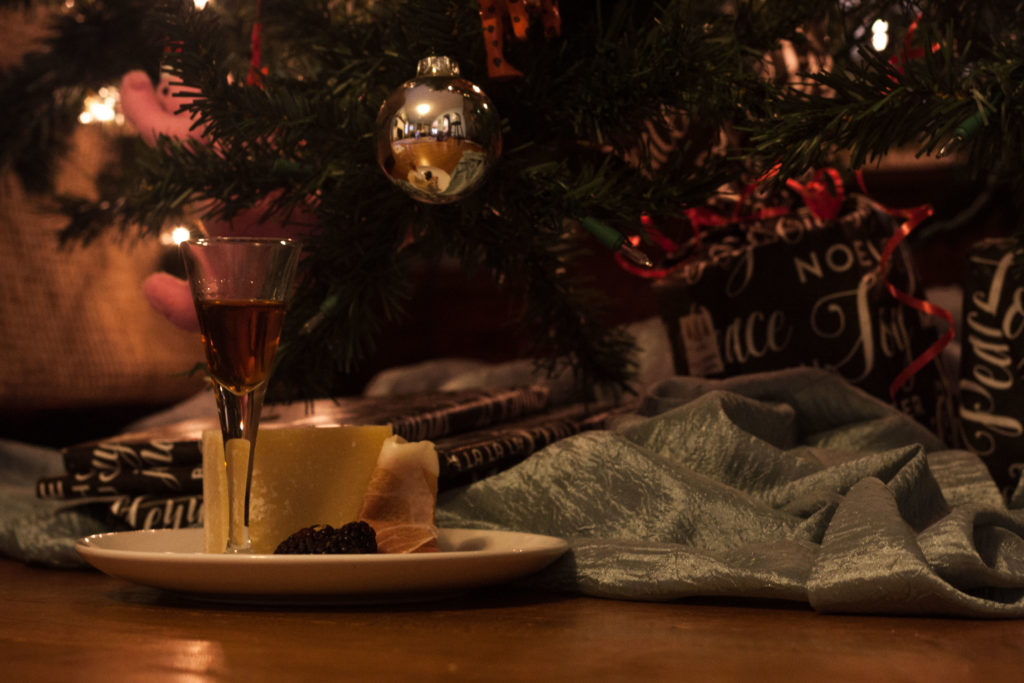Have a drink with: La Befana
Auguri. Va bene.
Ask her about: Getting stuff done.
In Catholicism, January 6 is the feast of the Epiphany: the last of the twelve days of Christmas and the day on which the three visiting kings are said to arrive to meet the baby Jesus.
And in Italian legend, it’s when La Befana comes to visit. And trust me, your holiday life needs La Befana. Because say what you will about Christmas, but it’s a predictable holiday. Man in red suit; bizarre Bing-Bowie version of Little Drummer Boy; cookies for the man, carrots for the reindeer; cars winning the Giant Bow Invitational; gifts for everyone whether you’ve been naughty or nice.
BORING.
La Befana to the rescue: because if the Christmas season needs anything, it’s a cranky, elderly Italian lady with a heart of gold, a sack full of cheese, and an advance wine order for a nice red.
Following the star to Jesus’ birth, the Three Kings stop at the house of an old woman. Too busy with housework to follow the wise men onward, she has second thoughts and packs her broom and a basket of homemade baked goods for Mary, thinking that a new mother might appreciate a clean floor and a meal more than gold or myrrh. Unable to catch up with the magi, she runs so fast she is lifted into the sky and has spent forever since in search of the Christ child. La Befana leaves gifts and sweeps up wherever she finds a child sleeping, since you never know divinity is hiding.
Some people claim Befana is a spirit, a witch, or a wise woman from Biblical Egypt. In an especially poignant telling of the tale, La Befana is a mother who herself lost a child (to plague, or the violence of King Herod), and in blind grief refuses to accept the loss. She bundles her child’s belongings and brings them to Jesus, who blesses her as a wandering mother to all children.
So let’s recap.
Santa: Gift list communicated via mall lap-sitting.
La Befana: Kids send their wishes up the chimney on little scraps of paper, singing: “Befana Befana…throw something down to me, a little orange or a pefanino [a biscuit], or a small piece of pecorino.”*
Oh, and while we’re at it:
Santa: Noisy plastic crap
Befana: Tasty Italian sheep-cheese
It’s good manners to put out a snack for Befana, too, but rather than cookies and milk, families usually leave “a glass of wine and a plate of sausage and broccoli,”** or a nice ricotta since the old lady might not have all her teeth.
Befana: 3, Santa: 0.
And it isn’t a given that you’ll get a pile of swag, either: yes, La Befana brings her usual gifts of little pastries, fruit or that yummy pecorino, but if you’ve been a noxious little sh*t over the past year, she’ll leave you ashes or lumps of coal:
La befana vien di notte
E ha le scarpe tutte rotte,
Porte cenere e carboni
Pie monelli e i cattivoni,
Ma ai piccini savi e boni,
Porta chicche e ricchi doni.
La Befana comes in the night
Wearing broken shoes,
She brings ashes and coals
For rascals and naughty kids
But for good and wise children
She brings treats and rich gifts.^
So if holiday stress has got you tied in Pinterest-friendly cinnamon knots, do me a favor: pour yourself a glass of Chianti, save one for La Befana, and wait for January.
Fun Facts:
Check out the Festa della Befana in eastern Italy (Urbania), which has claimed to be the birthplace of La Befana.
On the Italian influence in 20th century American popular music, thanks to which my daughter is able to request that we listen to “Dominick the Christmas Donkey” forty-seven times in a row.
Looking to find a colorful, cornmeal-oriented insult? “The Befana is a quintessentially Italian popolana, a wise old woman, humble and generous but sometimes harsh with the naughty. For instance, in the Veneto she is believed to be a toothless, illiterate polenta-eater who may reward bad children with a shoeful of ashes.”^^
It isn’t Christmas until I blubber like an idiot over A Charlie Brown Christmas, and watch Eric Cartman singing “O Holy Night.”
Additional Reading:
**Betsy Woodruff, Forget Santa. You Should Celebrate La Befana, Slate, December 18, 2015
Tomie dePaola, The Legend of Old Befana: An Italian Christmas Story
^^ Luisa del Guidice, Tomie de Paola and the Writing/Illustrating of Italian Folk Culture, Italian Americana, Vol. 15, No. 1 (Winter 1997)
*Stanley Gee, Some Notes on Italian Folk Customs, Folklore, v.92, no.1 (1982)
^Giorgio Mauri, La Befana Vien di Notte (1989)
